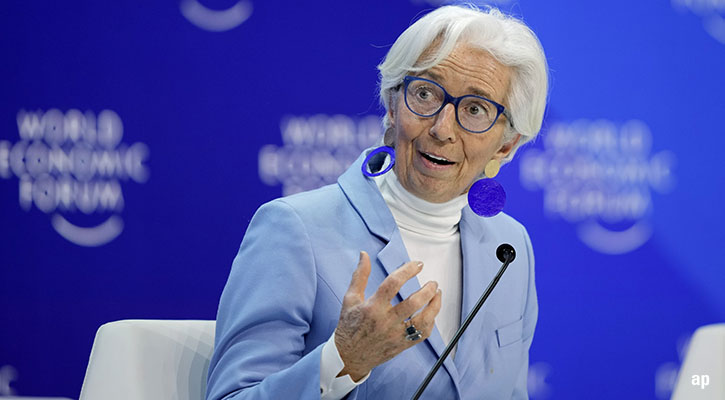'Premia' Surpasses 'Factor' as a Selling Point in 2017
The world of investing is driven by buzz words. Currently, one of the hottest labels is “premium” (or “premia,” its plural). In 2017, 27 funds launched in Europe with “Premia” in their name. Another two have come out of the gates in 2018 through 25 April, and more will surely be launched.
“Premia” even surpassed the popularity of another quantitative finance concept: "factor." There were 17 funds launched with "factor" in their name in Europe last year.
The notion of premia is taught in finance theory classes and is used most widely by quantitative specialists to describe the expected return of different investments. Premia are typically estimated as a combination of historical returns and current economic conditions, valuations, and instrument-specific technical attributes.
The most widely known risk premia are those related to equities, government bonds, and credit. They simply tell how much an investor can expect to earn above the risk-free rate as compensation for investing in a diversified portfolio of stocks, government bonds, or corporate bonds.
But in 2018, investors are going beyond such basic premia. Many funds seeking to profit from a range of “style” or “alternative” factors and the premium associated with them have come to the European market. Style premia refer to drivers of returns such as value, size, low volatility, momentum, and carry, which studies have suggested to outperform the market over the long term on a risk-adjusted basis.
There's nothing new in these factors and the premia associated with them. What's new is how they are mixed together into funds that are often managed with a quantitative approach.
Most Popular Premia Funds
These funds sit mostly in the alternatives categories but can also focus on premia within equities, fixed income, or commodities. Flows were strong last year and continued to be early this year. Among the 15 most popular alternative funds in the past year were three “premia” funds in the alternative–multistrategy Morningstar Category: AXA World Funds Multi Premia (which had net inflows of EUR 1.2 billion in the trailing 12 months through March 2018), AQR Diversified Risk Premia (EUR 1.1 billion), and AQR Style Premia UCITS (EUR 1.1 billion). Another fund gaining traction lately is La Francaise's LFIS Vision UCITS Premia, which saw an estimated EUR 343 million of net inflows in the first quarter of 2018.
When digging deeper, we find that among the most popular alternative funds, some hunt for premia despite not having it explicitly in their name. One such fund is BlackRock Style Advantage, which had net inflows of EUR 1.6 billion in the trailing 12-month period through March 2018. The fund's strategy is “harnessing style factors targeting broad, persistent returns.”
As an indication of the trendiness of the approach, AQR Diversified Risk Premia, AXA World Funds Multi Premia, and BlackRock Style Advantage have not even reached their three-year birthdays but are still gaining assets at a fast pace.
Volatility and Correlation
To give an idea of the risks incorporated into premia funds, we can look at volatility and correlation. Of the nine premia funds with a three-year track record in the alternatives category, the median fund had a 4.8% standard deviation of returns in the trailing three-year period through 31 March 2018. This was less than half of equity market volatility (the standard deviation of the MSCI World Index was 11.3% in the same period).
In selecting premia funds, it is important to look more closely into the details of the strategy, as there's a fair amount of variation.
Broadly speaking, risk premia funds fall into two groups. One group seeks to harvest the long-term premia related to different market and style factors with a long bias. Within a multistrategy fund, such an approach leads to moderate stock market risk, or beta. But while investors do gain some diversification benefits, there's typically a clear positive correlation with the stock market. If stocks do well, investors in these funds tend to reap some of the benefits.
However, another genre of premia funds is seeking to deliver the premia from factors without exposing the investors to market risk. This is achieved through a long-short portfolio of factors and leads to low equity market exposure (a market-neutral approach) that will likely minimize correlations with equities.
Since this approach almost fully isolates style premia in a market-neutral format, it generally requires a certain amount of leverage for the style premia to have a meaningful impact in a portfolio context.
As a result, current multistrategy premia funds have seen equity market correlations varying from 0.14 to 0.66 in the trailing three-year period. At the lower end, returns were hardly entangled with stocks at all, while at the higher end, correlations were at levels seen at some equity funds.
It is thus essential that investors consider what they are seeking to achieve from investing in a premia fund. When selecting funds, a thorough fundamental analysis informed by financial theory is essential, as many of these funds are so young that their track records are not sufficient for any meaningful return analysis. And as always, it’s important to remember that a back-tested track record of a complex strategy is hardly the same as one executed in a live market environment and including transaction costs.






















